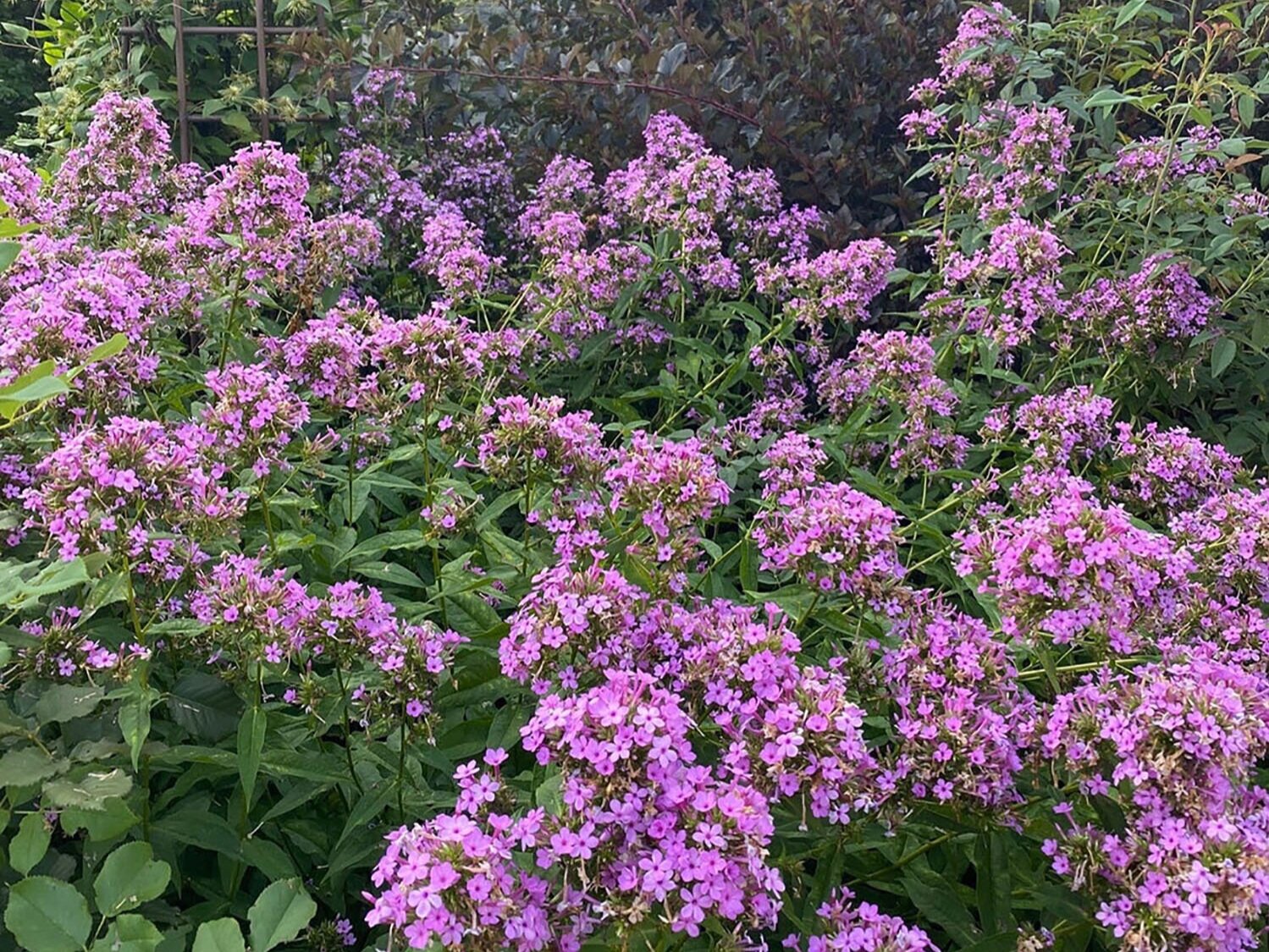Pollinators in the Garden
In the Garden with Andrew
Andrew Bunting. Photo courtesy of the Pennsylvania Horticultural Society.
In the last five to ten years there has been a growing interest among gardeners to add plants to their gardens that attract a multitude of pollinators. The butterfly milkweed, Asclepias tuberosa, and other native milkweeds have been becoming more and more popular in the garden because they play an important role in supporting butterflies, especially the threatened monarch butterfly. Throughout the spring and summer this perennial reaches 1-2 feet tall and has bright orange flowers.
Now just finishing flowering in the garden are a host of different ornamental onions, Allium. These are different from the large globe-like Allium that bloom in May in that they remain perennial for the summer with clumps of dark green basal leaves, and like all members of this genus are truly deer resistant. Allium lusitanicum ‘Summer Beauty’ has abundant globes of lavender flowers in the summer and reaches 1.5 feet tall. It attracts native bees, honey bees, bumble bees, butterflies and pollinating wasps. In my gravel garden in Swarthmore I grow Allium ‘Millennium’ with rose-pink flowers. ‘Medusa’ has lavender-purple flowers.
Phlox ‘Jeana’. Photo: Andrew Bunting
A tremendous garden phlox is Phlox paniculata ‘Jeana’. This summer flowering phlox blooms for several months and is covered with an abundance of flower heads filled with small, fragrant, pink flowers that are a magnet to a myriad of butterflies, as well as the Ruby-throated hummingbird. And, ‘Jeana’ has great resistance to powdery mildew which ravages most cultivars of garden phlox.
A great native of the Midwestern prairies is the rattlesnake master, Eryngium yuccifolium. Blooming from June to September, this very drought tolerant perennial will reach up to five feet tall. At the base it sets a rosette of serrated leaves and towering above the foliage are wiry stems with a spray of white thimble-like flowers. This stalwart native has an architectural quality. The rattlesnake master attracts an abundance of pollinating bees, wasps and flies.
Of course, one of the best and most attractive of all the perennials to entice pollinators is a host of coneflowers, Echinacea. Over the last 20 years the coneflowers have had an amazing renaissance in American gardens. During this period literally hundreds of species, hybrids and cultivars have been selected and promoted for their beauty and ability to attract a variety of pollinators, including long-tongued bees and butterflies, such as fritillaries, monarchs, painted ladies and swallowtails. The purple coneflower, Echinacea purpurea now comes in many colors—orange, yellow, pink, white and even red, as well as the original purple. On a recent trip to a local nursery in New Jersey, they recommended two exceptional cultivars, ‘Kismet Intense Orange’ and ‘Kismet Red’. Other exceptional cultivars from the plant evaluations conducted at the Mt. Cuba Center in Delaware include ‘Pica Bella’, ‘Sensation Pink’, ‘Santa Fe’, ‘Snow Cone’, ‘Glowing Dream’, ‘Fragrant Angel’ and ‘Julia’. There are also some other great species including the Tennessee coneflower, Echinacea tennesseensis, with rose-pink flowers, the pale pink coneflower, Echinacea pallida, with long drooping petals and shuttlecock-like flowers, and Echinacea paradoxa with black-eyed Susan-like yellow flowers with a black center. Coneflowers, when they are finished flowering, also become a great food and seed source for the American Goldfinch.
Pycnanthemum muticum. Photo: Andrew Bunting
And, without a doubt the best-of-the-best for the pollinator garden are the mountain mints, Pycnanthemum. Pycnanthemum muticum grows in sun or shade, but thrives best in full sun. It quickly turns into relatively large colonies in the garden by the expansion of underground stems. Reaching three feet tall, it is a great perennial for the front of the border. The foliage and flower bracts are a smokey-white and the flowers have small globular heads with very tiny flowers that are highly attractive to many pollinators. There are some large masses in the Entrance Garden at the Scott Arboretum on the Swarthmore College campus that are literally buzzing with activity when they are in bloom. The leaves have a minty fragrance when crushed and Pycananthemum is truly deer resistant. More great pollinator plants are the Virginia mountain mint, P. virginianum, and fine foliaged species, Pycnanthemum tenuifolium.
The pictures in the article were taken at Swarthmore College by Andrew Bunting.
Send your gardening questions to editor@swarthmorean.com. Put “Garden” in the subject line.
Andrew Bunting is vice president of public horticulture at the Pennsylvania Horticultural Society and vice president of the Swarthmore Horticultural Society.






